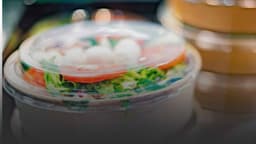
eCommerce spending sentiment outlook remains optimistic
As businesses world over are battling recession and bringing their offline operations and revenues back to pre-Covid levels, eCommerce growth appears to have peaked and plateaued. RBI’s consumer confidence index assessment of household sentiment about the current and future economic situation gives a sense check on how consumers plan ahead for future expenses. To complement this analysis, Redseer’s quarterly ECCI (eCommerce Consumer Confidence Index) aims to gauge consumers’ future eCommerce spending expectations. While the sentiment about eCommerce remains optimistic overall, read on to find out how the ecosystem has evolved in the last quarter and what it means for the stakeholders.
Consumer Discretionary Wallet Up 4% Amid Inflation Dip and Rising GNI

The combined effect of moderating inflation and rising GNI has fostered a 4% growth in the consumer’s discretionary wallet, empowering them to engage in additional expenditures. This surge in discretionary spending possesses the potential to strengthen retail industries.
Q1FY24: Offline Retail’s FMCG-Driven Surge

Our analysis shows positive trends in consumer spending for both offline and online retail. In Q1FY24, retail commerce grew as inflation cooled and incomes rose. Offline retail outpaced eCommerce, driven by higher rural demand (particularly FMCG) and a steady uptick in urban demand.
Future of eCommerce spending sentiment remains positive

Redseer conducts a quarterly survey to assess the consumer sentiment towards eCommerce spending and adoption in the following six months. Our survey conducted in the 1st week of July indicates an optimistic consumer outlook towards Q2, with an ECCI of 131. This is a slight decline from an ECCI of 142 in Q1 FY24. The eCommerce Consumer Confidence Index serves as a gauge of consumer spending sentiment and confidence in the eCommerce sphere.
Maturing Market and Shifting Consumer Dynamics


Want to evaluate new investment and M&A opportunities?
Over 45% of the respondents plan to increase their eCommerce spends, largely across the categories of fashion, grocery, beauty, and personal care. There is also an increase in the Net Promoter Score to 52% as eCommerce platforms continue to perform well on the key customer satisfaction drivers.
However, with eCommerce sector approaching maturity, the adoption of new categories is slowing down. Most non-users also tend to remain sticky (prefer offline retail) and lower growth is expected in new consumers willing to try online shopping.
eCommerce will continue to be a key driver for retail growth and consumer spending. However, given the slowdown in new user adoption, much of the growth will be driven by existing users. Ecommerce companies need to craft their strategies accordingly with focus on premiumisation, cross-selling, loyalty programs and a continued thrust on customer satisfaction.


Value Retail: The Quiet Force Reshaping MENA’s Consumer Economy

India’s Defence DeepTech Flywheel: The $6Bn Market Nobody’s Watching

Ready-to-Eat Brands Are Leaving 85% of Addressable Consumers on the Table
